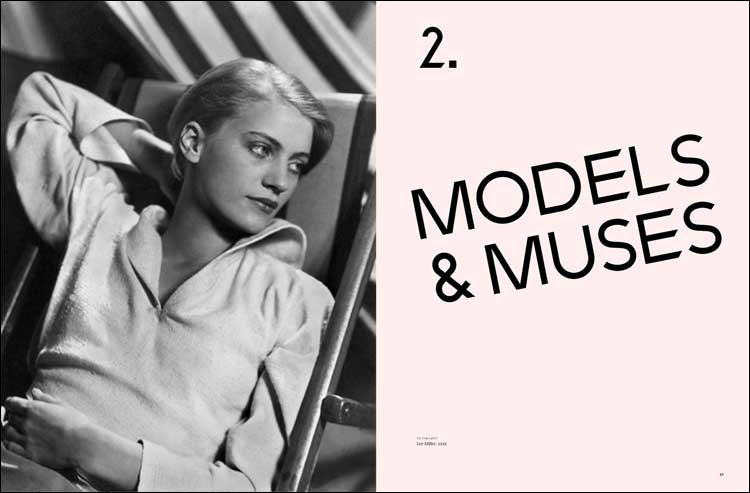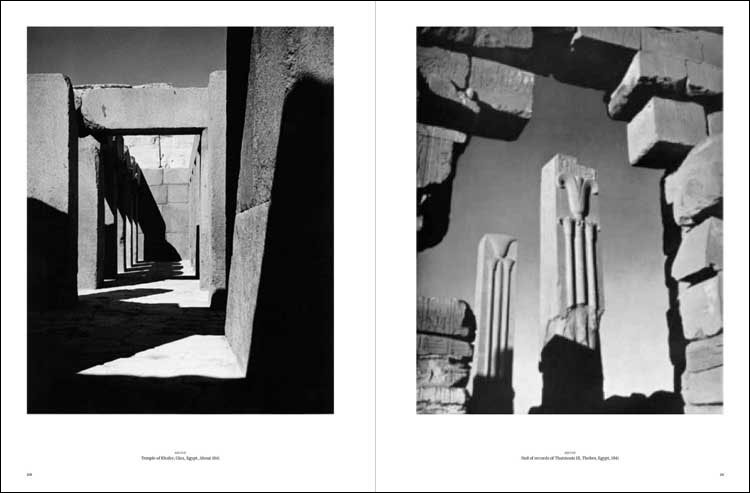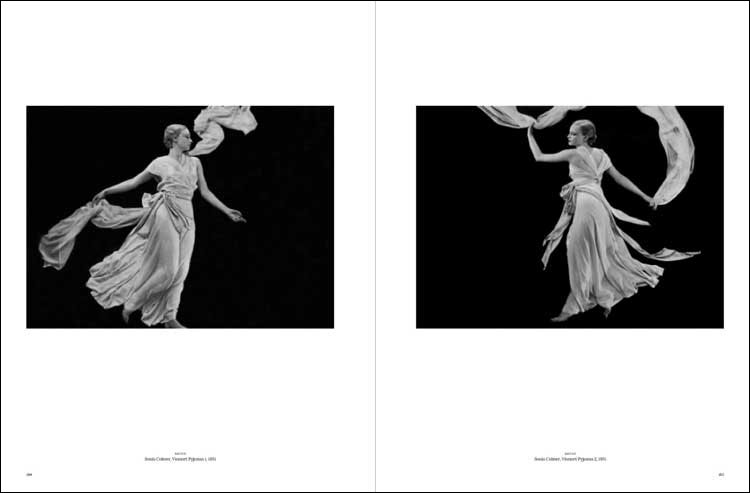
Left: Marianne Breslauer, Portrait of George Hoyningen-Heune, Paris, 1932. Image courtesy George Hoyningen-Huene: Photography, Fashion, Film, published by Thames & Hudson.
reviewed by SABINE SCHERECK
This book is a treat. The pictures alone draw you into the inner workings of a fashion magazine at the height of glamour in 1930s Paris and beyond. The rare ones capture “off-the-record” scenes, such as the designer Coco Chanel kneeling on the floor next to a model, or the model and photographer-to-be Horst P Horst sharing a laugh on a Paris rooftop with his teacher, the fashion and star photographer George Hoyningen-Huene (1900-1968).

Marlene Dietrich, 1936. © The George Hoyningen-Huene Estate Archives.
Susanna Brown’s monograph, George Hoyningen-Huene: Photography, Fashion, Film, is a welcome homage to a long-overlooked but significant photographer, whose deceptively simple style influenced younger colleagues, including Richard Avedon, Irving Penn and Horst. Hoyningen-Huene is the artist behind many photographs that made elegant 1930s fashion sublime, yet his name is known mainly to aficionados of the period, or perhaps to devotees of stars of the silver screen such as Marlene Dietrich, Cary Grant, Greta Garbo and Katharine Hepburn, all of whom he photographed. It is only recently that fashion photographers have been recognised as artists in their own right and their contribution to art history has been taken seriously. Reading about Hoyningen-Huene’s resourcefulness and ingenious skills when creating his output in the face of the restrictions of cumbersome studio cameras and long exposure times, it is clear that he was a true artist.

Divers, swimwear by A. J. Izod, 1930. © The George Hoyningen-Huene Estate Archives.
His most famous, possibly most reproduced image is Divers, Swimwear by A J Izod (1930), which, for example, served as a book cover to sell the 2014 edition of Evelyn Waugh’s novel Decline and Fall by the Swiss publisher Diogenes. It shows a young man and a woman side on, sitting on what seems to be a springboard by a pool, a lake or perhaps the sea. Its serenity transports the viewer to a calm, cooling place on a warm summer’s day with a refreshing plunge into the water in sight. Yet, the reality is that Hoyningen-Huene took this image on the roof of the Vogue studio on the Champs-Élysée in Paris.
This finely printed book opens with a vivid account of his awe-inspiring life, which is complemented by eight chapters exploring different aspects of his life and work. Hoyningen-Huene, or Huene as he is mostly referred to, was born in St Petersburg to Baron Barthold Theodor Hermann von Hoyningen-Huene, who was of German descent, and his American wife, Emily Ann. Brown’s evocative description of his surroundings in Imperial Russia is a joy to read: “His childhood unfold[s] against the soundtrack of hooves on the cobblestones, the seemingly ceaseless ringing of church bells and the tinkling of piano music. He watches his female relatives glitter beneath crystal chandeliers …”

Balenciaga, 1939. © The George Hoyningen-Huene Estate Archives.
Huene had two older sisters to whom his mother devoted much of her attention. It was an international household with many magazines coming from abroad: Punch and the Illustrated London News from England, L’Illustration from France, Die Woche and Elegante Welt from Germany, and the New York Herald, Vogue, Vanity Fair and Harper’s Weekly from the US. The fashion for the women in the family came from Paris, as was the custom for his class. Huene spoke German, English, Russian and Estonian, and before reaching adulthood, he had travelled widely, to Cannes, St Moritz, Kreuznach, Rome and Florence. A trip to Berlin with its classical sculptures left him spellbound. Private tours through the Hermitage with a friend of the family widened his knowledge of art history. He was particularly taken by the ancient Greeks, and the classical ideals of balance, harmony, nobility and restraint would later shape his photographs.

Lee Miller. Image courtesy George Hoyningen-Huene: Photography, Fashion, Film, published by Thames & Hudson.
In addition to attending school, he was educated by young private tutors with a far more progressive outlook on society than his parents, to whom he was not very close. His mother was preoccupied with his sisters, and his father, a military man and chief equerry to Tsar Nicholas II, was rarely at home. When he was, he ruled with a firm and violent hand. Discipline and a sense of duty were instilled, which remained part of his everyday life: in contrast to many of his contemporaries, particularly those in his social and artistic circles, he practised a healthy lifestyle. According to Horst, his one-time lover and life-long confidant: “He exercised vigorously, seldom drank, never ate to excess, and kept early hours.” Later in life, he became a student and friend of the physical trainer Joseph Pilates.

George Hoyningen-Huene: Photography, Fashion, Film, published by Thames & Hudson. Image courtesy Thames & Hudson.
Huene’s youth changed radically with the start of the Russian Revolution in 1917. His family fled via England to France. While his mother settled on the Riviera, his sisters chose Paris. Deprived of their former financial means and obliged to earn a living without training in any profession, the capital of fashion offered opportunities in a field with which they were familiar. The elder sister, Betty, soon launched the fashion house Yteb, for which her brother provided the drawings. Huene’s special skill opened doors to the leading magazines Vogue, Le Jardin des Modes and Harper’s Bazaar. However, a good sketch artist did not make a first-class photographer. A combination of activities paved the way: First, he designed backgrounds for studio shots, where he could observe photographers. Second, he worked as a film extra, which enabled him to closely observe the lighting crew when lighting faces and sets. Third, he was friends with the photographer Man Ray, who taught him the basics. Another major influence was Edward Steichen, his predecessor at Vogue, before Hoyningen-Huene rose to become its chief of photography at just 25.

Frank Capra, c1934. © The George Hoyningen-Huene Estate Archives.
Huene’s biography is one of the most compelling sections of the book and leaves you wishing for more. Wisely, Brown makes it clear early in the book that her work is not the first foray into his life and work. It builds on William A Ewing’s The Photographic Art of Hoyningen-Huene, published in 1986 and republished in 1998 by Thames & Hudson, which has also released this new work. Both, Ewing and Brown drew on an unpublished memoir by Huene, which recalls his early years. Ewing, in the 1980s, was able to speak to those who knew him, to get a sense of his personality. Despite Huene’s privileged background, he was not a snob and was seen by those who knew him best as “deeply cultivated and thoughtful”. Horst said he was “constantly challenging accepted conventions and simple solutions”. Yet, he could have outbursts of temper, which on one occasion was linked to leaving his post at Vogue. Private photographs testify a sense of humour.

Left: Cary Grant, 1934. Right: Gary Cooper, 1934. Image courtesy George Hoyningen-Huene: Photography, Fashion, Film, published by Thames & Hudson.
The foreword of Ewing’s book was written by the film director George Cukor, a close and long-time friend of Huene. A perk of Ewing’s book is the inclusion of Huene’s impressive illustrations, which draw on the art deco style of the period. With Brown’s undertaking to get closer to Huene, it was Ewing’s turn to write a foreword to her book. In it, curiously, he praises Huene’s excellent writing skills, something one would not expect when picking up a book about a 1930s photographer. But this only shows that he was more than a master of light and creator of compelling portraits. After leaving Vogue in Paris and switching to Harper’s Bazaar in New York in 1935, he grew tired of fashion and ventured out of the studio with his camera to foreign countries and cultures. The results of his journeys found their way into books about Greece, Egypt, Africa and Mexico among others. In the late 1940s, he left the fashion world and turned to cinema, a life-long passion. He had ambitions as a documentary film-maker, but realised there was no money in it and worked as a colour consultant in Hollywood instead. There he liaised with costume and set designers to ensure their colour palettes would harmonise when they came together on the film set.

Left: Temple of Khafre, Giza, Egypt, about 1941. Right: Hall of records of Thutmosis III, Thebes, Egypt, 1941. Image courtesy George Hoyningen-Huene: Photography, Fashion, Film, published by Thames & Hudson.
The chapters following Huene’s biographical overview, among them The Vogue Years, Models and Muses, English Influences and Harper’s Bazaar, cover facets of his private and professional life. Written by different contributors, some chapters focus on specialist subjects, such as Interpreting Couture, an in-depth analysis of his fashion shots, and A Dream House, which takes the reader to 1930s Tunisia, where Huene had a house by the coast in Hammamet, then a popular retreat for intellectuals.

Left: Sonia Colmer, Vionnet Pyjamas 1, 1931. Right: Sonia Colmer, Vionnet Pyjamas 2, 1931.
Image courtesy George Hoyningen-Huene: Photography, Fashion, Film, published by Thames & Hudson.
The strength of the book lies in the Paris period. It remains the most exciting time in Huene’s career, and Brown’s insights into the fashion world of the time present a bigger picture. For example, when admiring the fashion shots, one wonders why some dresses are modelled by the likes of Princess Natalie Paley or Lady Abdy. Their Anglo-Saxon names came through marriage, their nobility was inherent. Like Huene and his sisters, they were Russian aristocrats in exile who now had to support themselves. Their beauty was their kudos and modelling was an option at a time when it had just begun developing as a profession. Other women turned to designing clothes, and numerous fashion houses sprang up with Russian emigrés as their driving force.
The magic of those Paris years and the fun Huene had with his friends is caught in details such as a 1932 fancy dress party on the theme of the film Shanghai Express. Huene loved the cinema and this Hollywood film, directed by Josef von Sternberg and starring Dietrich, made film history for its exquisite lighting and costumes. Also, as a queer icon, Dietrich must have been an additional appeal. Huene was openly gay and moved in queer circles, as did some of his colleagues and friends, among them Cecil Beaton. Images of Beaton and others in drag show their amusing side.

Erna Carise and models around a Michelin push-ball, 1930. © The George Hoyningen-Huene Estate Archives.
Huene’s black-and-white photographs captivate through their fine use of lines and light combined with a clear composition. Although models were required to remain still, their pose often suggests movement, which brings the scene to life. Besides the many evening gowns that he arranged to light, it is his beach and sportswear series that are likely to appeal to the reader. With the clothes clearly rooted in the 1920s and 30s, they convey a sense of optimism and freedom. In the pictures of that time, Huene strove for sophisticated beauty. This gets lost in his later photos, taken in colour for Harper’s Bazaar in the 1930s and 40s, which, in contrast, feel overwrought and overloaded – more baroque than Hellenist class in style.

Roger Schall, portrait of George Hoyningen-Huene, Paris, 1937. Photo: Roger Schall © Collection Schall.
The attraction of Brown’s book, alongside the gathering of Huene’s prolific output and insightful texts, are the images of Huene himself, particularly those of him at work. His upper body is just covered by a white vest, owing to the heat in the studio caused by the lamps and manual labour connected to handling the heavy camera. This reveals that he was rather unpretentious in this respect and his focus lay on delivering excellent work.
Brown’s comprehensive monograph raises Hoyningen-Huene’s profile and hopefully moves him to a more prominent position within photographic history – and, of course, make a younger generation aware of his extraordinary craft and life.
• George Hoyningen-Huene: Photography, Fashion, Film, by Susanna Brown, is published by Thames & Hudson, price £75 (hardback with 328pp and 300 illustrations).